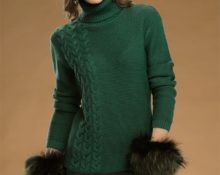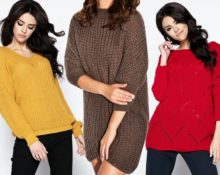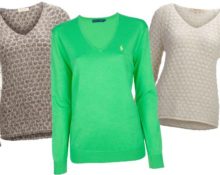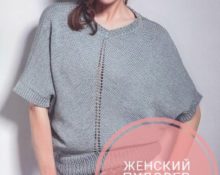It's getting colder, and many are already thinking about insulating their wardrobe. There is a wide variety of styles of warm clothing on the market. Some of the most polar ones are jumpers, pullovers and sweaters. What are their differences, how to learn not to confuse these styles and what to wear them with?
What are the differences
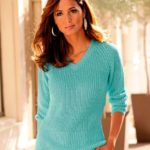 Pullover. The main distinguishing features of the pullover: V-shaped neckline and a fitted feminine silhouette. If the neckline remains unchanged, then there are variations on the second point: modern fashion allows you to sew a pullover with a looser cut. But historically it is a tight-fitting garment. Various materials are used for sewing depending on the purpose. For warmer products, thin wool is used, for demi-season and summer models - knitwear. There are modifications with different long sleeves, as well as the product itself.
Pullover. The main distinguishing features of the pullover: V-shaped neckline and a fitted feminine silhouette. If the neckline remains unchanged, then there are variations on the second point: modern fashion allows you to sew a pullover with a looser cut. But historically it is a tight-fitting garment. Various materials are used for sewing depending on the purpose. For warmer products, thin wool is used, for demi-season and summer models - knitwear. There are modifications with different long sleeves, as well as the product itself.
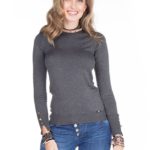 Jumper. Knitted or woolen warm clothes. Unlike a pullover, a jumper has a round neckline or a very small collar. Length - approximately to the hip line, but sometimes can reach knee level.Modern designers offer different types of jumpers: oversize, stretched, long, products with shoulder pads or with raglan sleeves. Initially, a jumper was an element of men's sportswear, borrowed from the equipment of sailors. He came to women's fashion thanks to Coco Chanel. Light cut, femininity and high compatibility with a skirt and cardigan allowed it to gain popularity among the female half of the population.
Jumper. Knitted or woolen warm clothes. Unlike a pullover, a jumper has a round neckline or a very small collar. Length - approximately to the hip line, but sometimes can reach knee level.Modern designers offer different types of jumpers: oversize, stretched, long, products with shoulder pads or with raglan sleeves. Initially, a jumper was an element of men's sportswear, borrowed from the equipment of sailors. He came to women's fashion thanks to Coco Chanel. Light cut, femininity and high compatibility with a skirt and cardigan allowed it to gain popularity among the female half of the population.
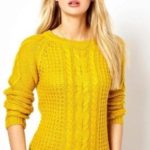 Sweater. A product made from wool yarn of varying thickness. Characteristic features: high collar and long sleeves. Unlike a jumper and a pullover, a sweater is a warmer option. Manufacturing method: knitting needles, crochet hook, special equipment. A tighter knit is used for the cuffs. The front side of the product often contains various designs or ornaments. The history of its popularization is connected with clothes for weight loss. In the 19th century, doctors advised exercising in warm clothing to significantly increase sweating and promote fat burning. In English, “to sweat” is “to sweat”, hence the name “sweater”. Later it began to be used as equipment for the military and athletes. The sweater came into women's fashion gradually: first Coco Chanel opened it to the world of boutiques and catwalks, then Marilyn Monroe contributed to its spread among the masses so much that the expression “sweater girl” appeared - an attractive girl in a tight sweater.
Sweater. A product made from wool yarn of varying thickness. Characteristic features: high collar and long sleeves. Unlike a jumper and a pullover, a sweater is a warmer option. Manufacturing method: knitting needles, crochet hook, special equipment. A tighter knit is used for the cuffs. The front side of the product often contains various designs or ornaments. The history of its popularization is connected with clothes for weight loss. In the 19th century, doctors advised exercising in warm clothing to significantly increase sweating and promote fat burning. In English, “to sweat” is “to sweat”, hence the name “sweater”. Later it began to be used as equipment for the military and athletes. The sweater came into women's fashion gradually: first Coco Chanel opened it to the world of boutiques and catwalks, then Marilyn Monroe contributed to its spread among the masses so much that the expression “sweater girl” appeared - an attractive girl in a tight sweater.
So, the difference is that: a jumper is a lightweight version, a product with long or short sleeves and a round neckline. Pullover is a type of jumper with a V-shaped neck, often less loose cut, often tight-fitting. A sweater is the warmest of the three options, a woolen product with a high collar and long sleeves.
What to wear with a pullover and jumper
 The jumper and pullover are distinguished by their versatility, so they will suit almost any clothing and style. Men can wear a shirt under the product (both plain and with an unobtrusive print). A jacket will help complement a classic look with a white shirt and a plain jumper. The products go well with jeans of various styles and colors, and trousers.
The jumper and pullover are distinguished by their versatility, so they will suit almost any clothing and style. Men can wear a shirt under the product (both plain and with an unobtrusive print). A jacket will help complement a classic look with a white shirt and a plain jumper. The products go well with jeans of various styles and colors, and trousers.
There are many more variations for women: oversize models, fitted, elongated models, dresses. Jeans and trousers are ideal for them: tight skinny, flared, classic.
IMPORTANT. You should choose the right shoes and maintain the same style.
The jumper looks no less stylish with a skirt: it can be tucked in or worn over it. To create layering, a jumper or pullover is worn over a shirt (with or without a print) so that the edges of the shirt are visible from below and the collar is visible from above. It is important to remember that these products are basic, which means they give room for imagination and the ability to combine various wardrobe items.


 0
0